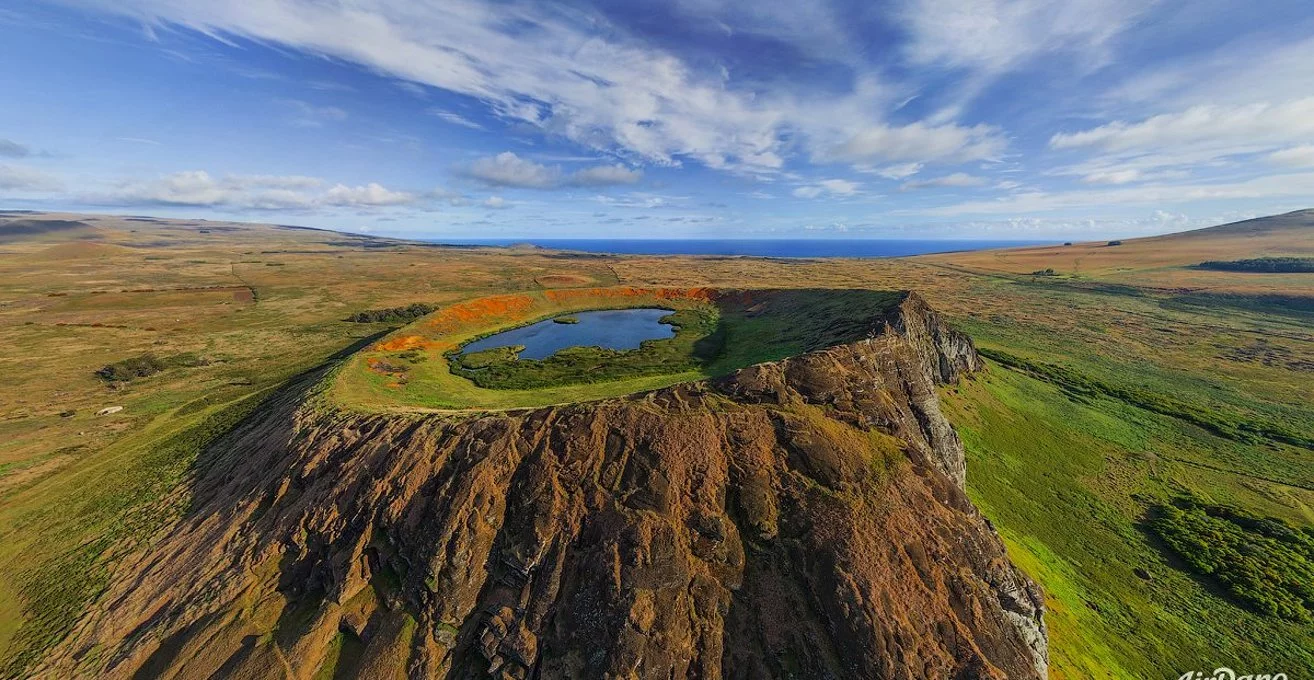Easter Island, renowned for its enigmatic Moai statues and rich Polynesian heritage, harbors a secret at the heart of its rugged landscape: Rano Raraku. This volcanic crater, often referred to as the “Quarry of the Moai,” is not merely a geological wonder but a sacred site steeped in history, mythology, and cultural significance. As visitors venture into the depths of Rano Raraku, they embark on a journey of discovery, unraveling the mysteries of this ancient marvel.
1. Geological Marvel:
Rano Raraku stands as a testament to the volcanic forces that shaped Easter Island millennia ago. The crater’s imposing presence dominates the surrounding landscape, its steep slopes cloaked in lush vegetation contrasting with the barren terrain of its interior. Geologists marvel at the intricacies of its formation, from the layers of hardened lava to the mineral-rich soils that sustain a diverse ecosystem of flora and fauna.
2. Birthplace of the Moai:
More than a geological landmark, Rano Raraku holds profound cultural significance as the birthplace of the iconic Moai statues that define Easter Island’s identity. Within the crater’s confines lie hundreds of these monolithic figures, in various stages of completion, scattered amidst the debris of ancient quarries. Archaeologists believe that Rano Raraku served as a spiritual and artistic center where master craftsmen sculpted the Moai from the volcanic rock, imbuing each statue with the essence of ancestral spirits.
3. Unraveling Ancient Mysteries:
The Moai of Rano Raraku continue to intrigue scholars and visitors alike, their enigmatic presence shrouded in myth and mystery. Guided tours offer insights into the craftsmanship and symbolism behind these imposing figures, shedding light on the cultural practices and beliefs of the island’s indigenous inhabitants. As visitors explore the quarry’s pathways and hidden alcoves, they are transported back in time, envisioning the laborious process by which the Moai were carved, transported, and erected upon ceremonial platforms known as “ahu.”
4. Conservation and Preservation:
In recent years, efforts have been made to preserve Rano Raraku and its precious archaeological treasures for future generations. Sustainable tourism practices aim to minimize the impact of visitors while safeguarding the integrity of the site and its fragile ecosystem. Conservation initiatives focus on preventing erosion, controlling invasive species, and maintaining the balance between preservation and exploration. By supporting these efforts, visitors can contribute to the ongoing protection of Rano Raraku and its cultural heritage.
5. A Journey into the Past:
As travelers stand amidst the silent sentinels of Rano Raraku, they are transported to a realm where time seems to stand still. The whispers of ancient artisans echo through the ages, their legacy immortalized in stone for all eternity. In the shadow of the volcano, beneath the watchful gaze of the Moai, visitors embark on a pilgrimage of the soul, connecting with the spirit of Easter Island and the enduring legacy of Rano Raraku.
In conclusion, Rano Raraku is more than a volcanic crater; it is a sacred sanctuary where past and present converge in a timeless dance of discovery and reverence. As visitors explore its storied slopes and contemplate the mysteries of its ancient quarries, they bear witness to the enduring legacy of Easter Island and the profound connection between humanity and the natural world.


